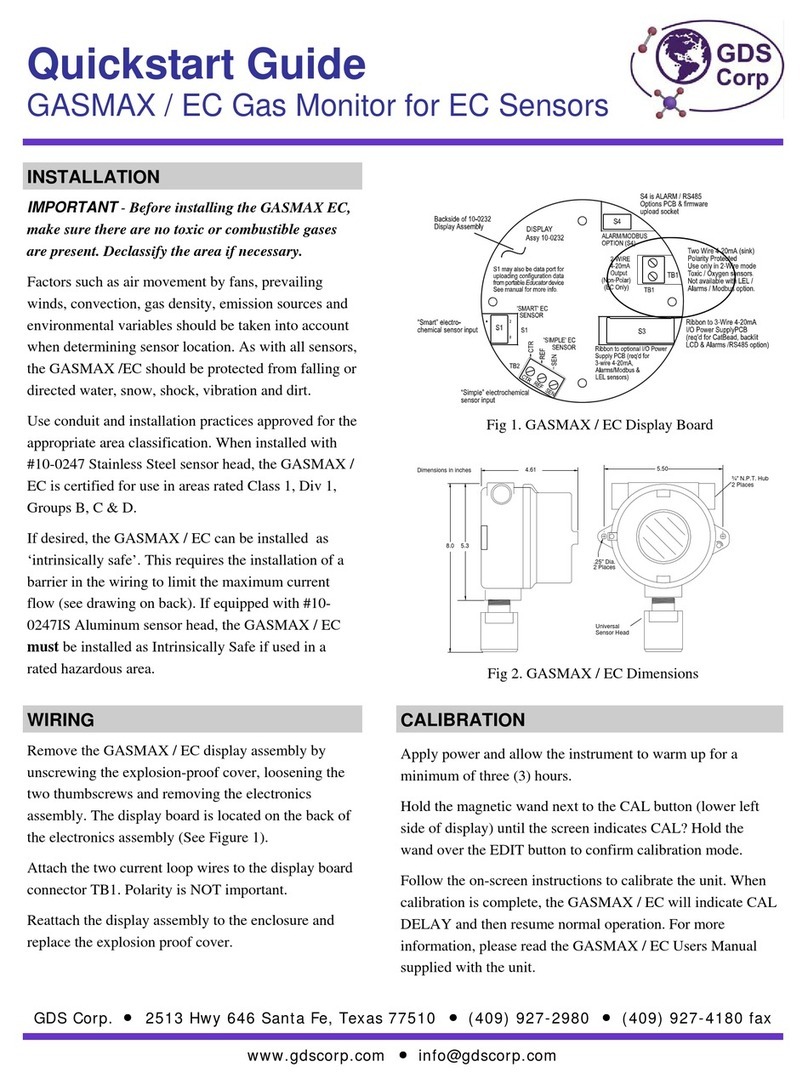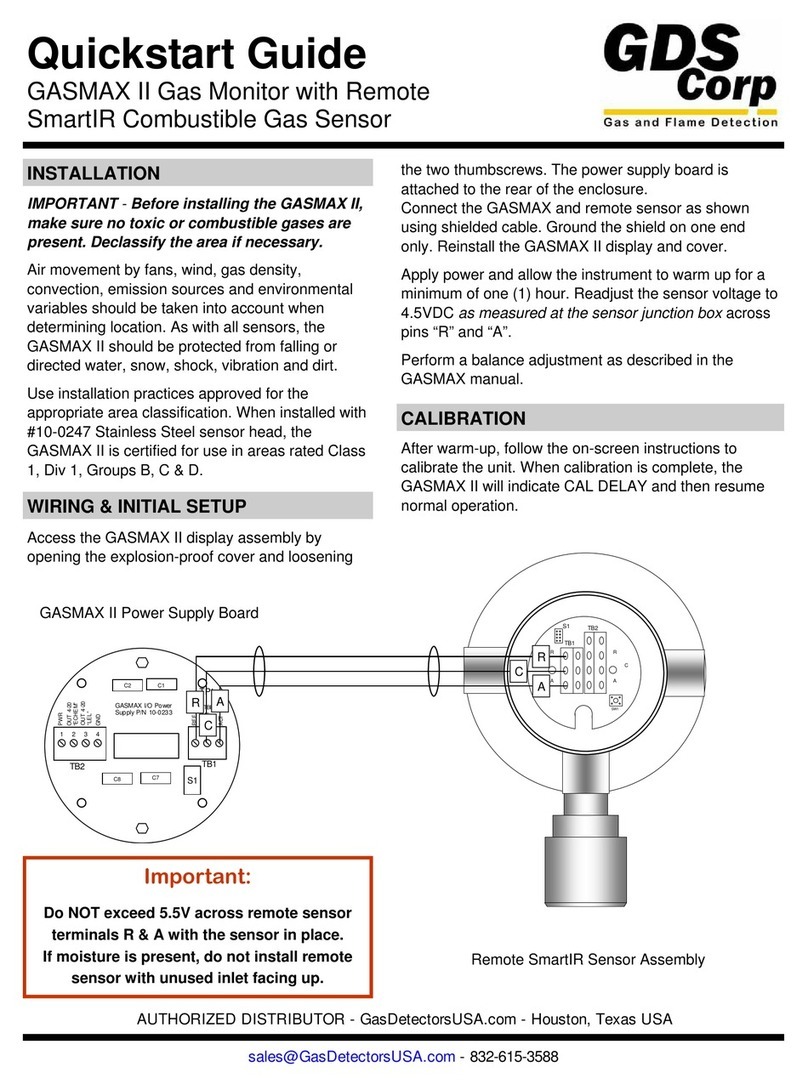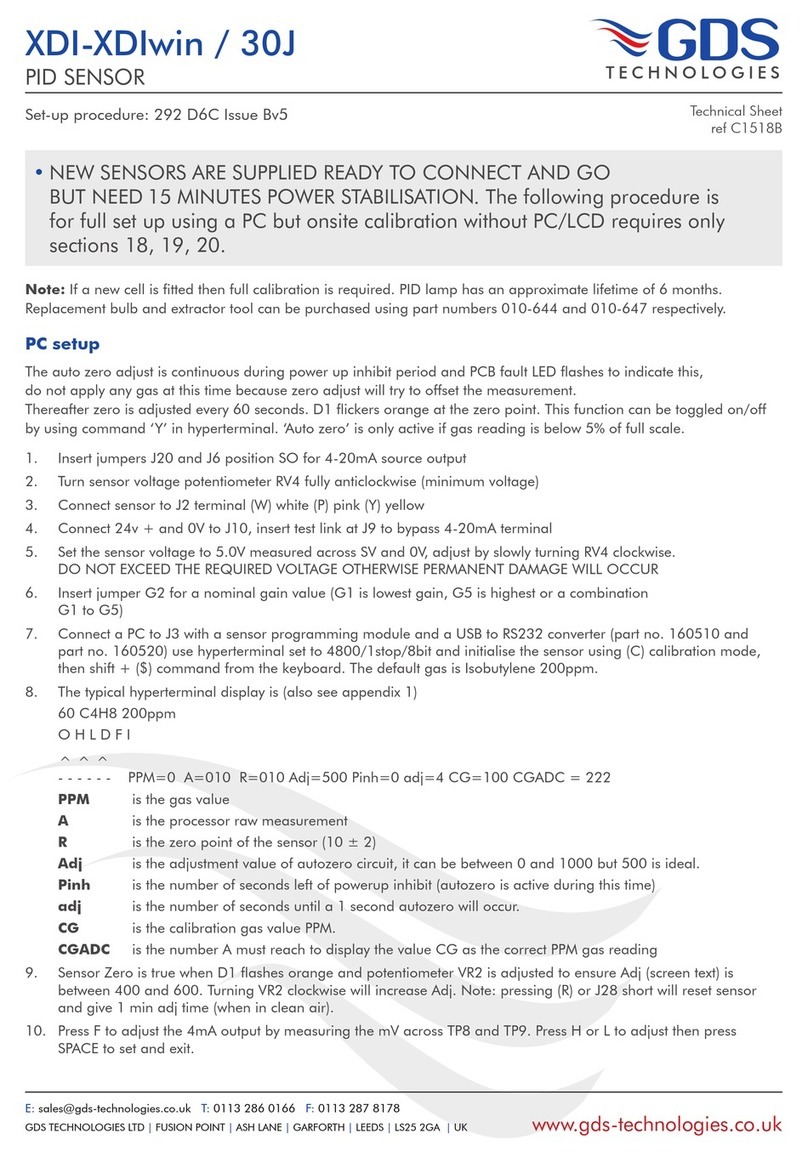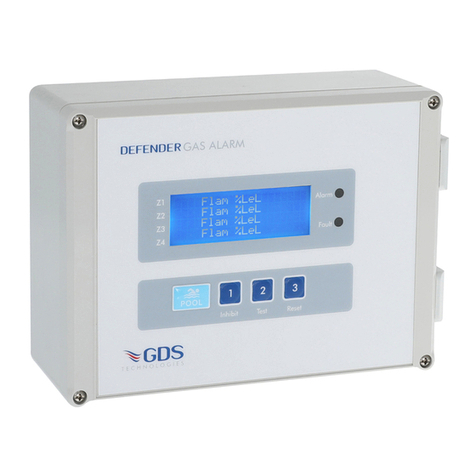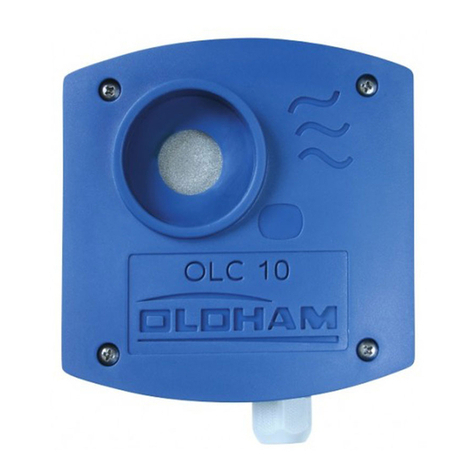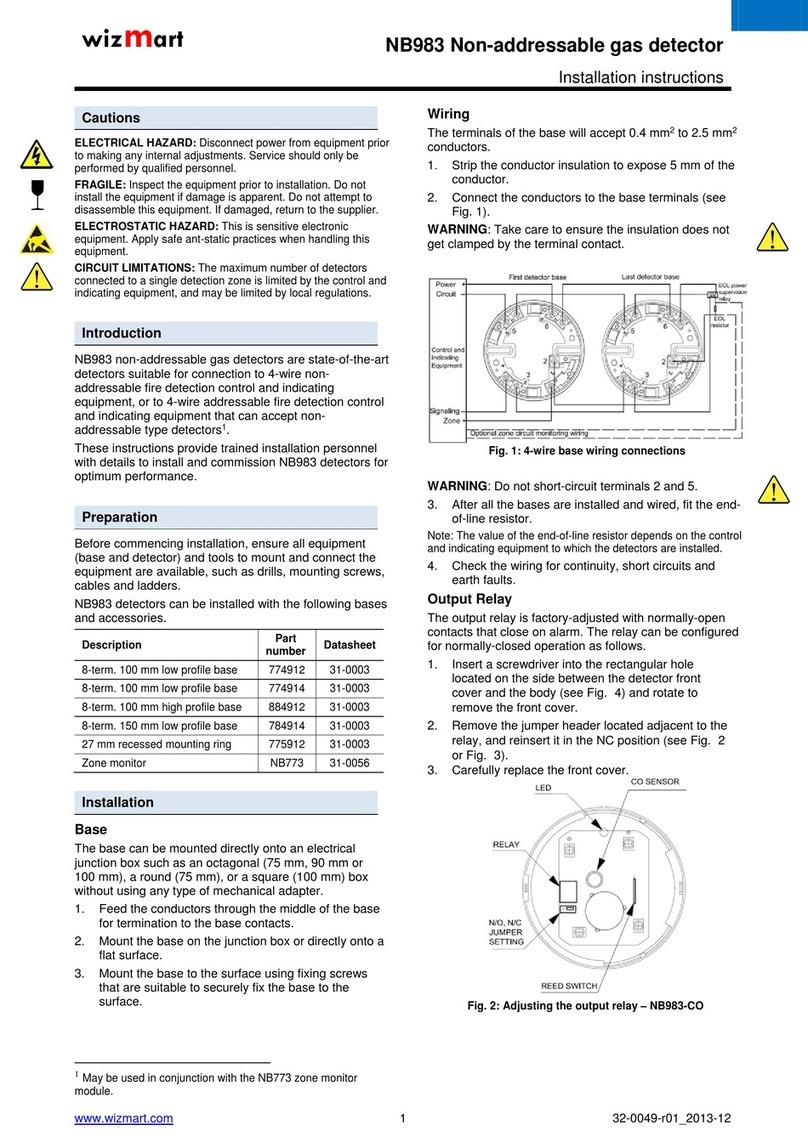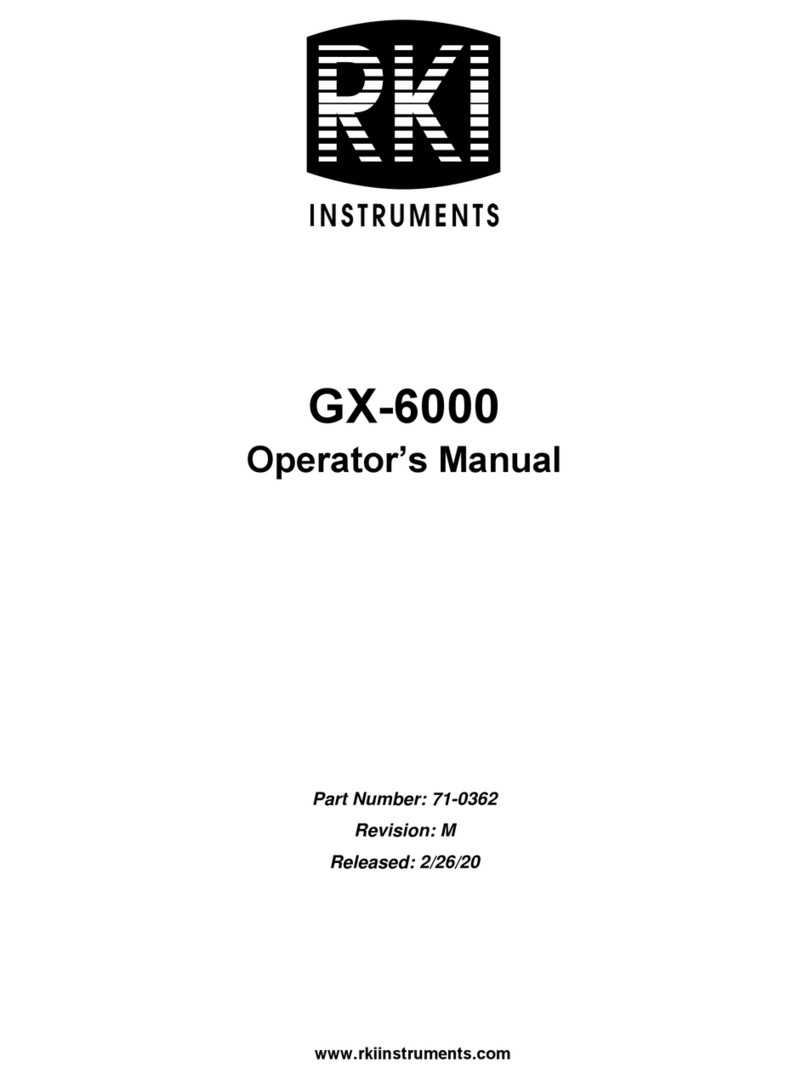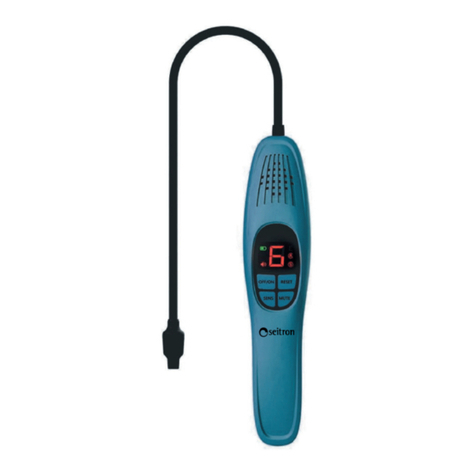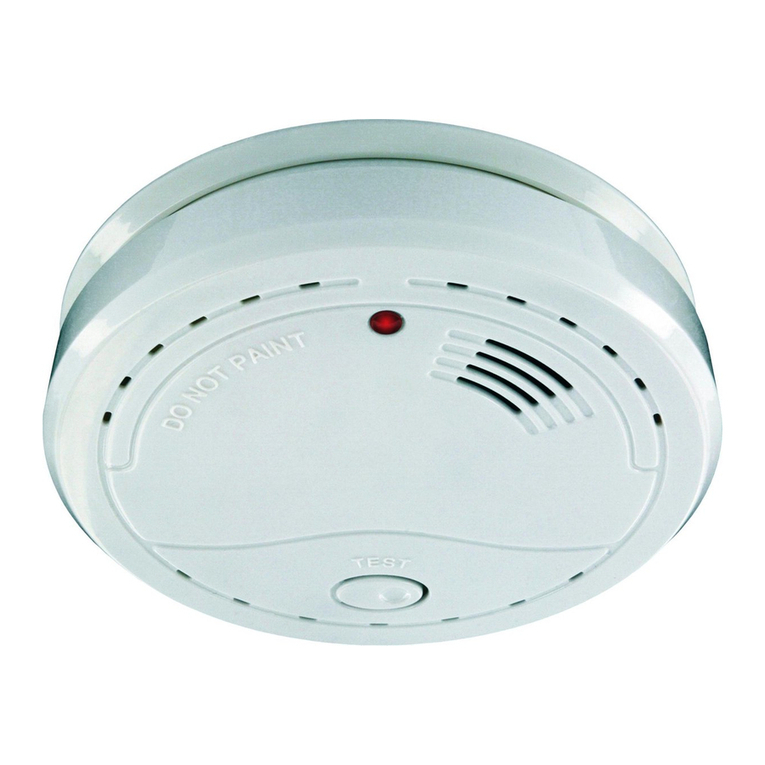
5
Installation
The GDS 404 Series control instrumentation is designed for installation in a safe area only. Siting of the instrument
should be chosen with regard to the following points:
(a) Cable within the enclosure should be cut back to the minimum length and having been terminated should be kept
away from electronic components and the ribbon cable. Cable requiring to pass from the bottom of the enclosure to
the top should be run down the right hand side adjacent to the enclosure metalwork.
(b) Away from sources of local heat and with room for adequate ventilation.
(c) Within easy reach and audible distance of operating personnel.
(d) Convenient to a separately fused power supply.
(e) Incoming sensor cables and outgoing alarm annunciation.
(f) Sensor cables to be electrically shielded i.e. M.I.C.C., steel wire armoured, screened cable.
To prevent any effect from earth currents the cable shielding should be grounded at one end only.
The instrumentation should be subjected to a minimum of vibration and shock.
Ascertain the voltage rating of the power supply to which the instrument will be connected
SITING THE SENSING HEADS
A key feature of the installation is the correct siting of the sensing head. Several considerations must be taken into
account, the most important being the density of the gas.
Density (air = 1)
Acetone 2.0 n-Hexane 3.0
Ammonia 0.6 Hydrogen 0.1
Benzene 2.8 Methane 0.6
n-Butane 2.0 n-Octane 3.9
Carbon monoxide 1.0 n-Pentane 2.5
Ethane 1.0 n-Propane 1.6
Ethyl alcohol 1.6 Town gas 0.4-0.7
n-Heptane 3.5 Xylene 3.7
Under still air conditions, a ‘lighter than air’ gas such as methane leaking from a small orifice at ground level, will rise
in a plume the shape of which approximates an inverted cone. As the gas rises, it draws air from the surroundings and
creates a turbulence. Resulting from this there occurs rapid dilution and, unless a sensor is positioned within the plume,
there will be no initial indication of a leak.
As gas continues to escape, the diluted concentration rises to ceiling level and begins to layer. In time the concentration
at ceiling level will increase and this, in turn, will displace air downwards.
Dangerous levels will, therefore, tend to occur at ceiling level and the thickness of this layer will increase with the
passage of time.
Ventilation of the room will of course alter the situation significantly but it should be remembered that if the ventilator is
not at ceiling level, a dangerous concentration can still occur between the top of the ventilator and the ceiling.
For heavier than air gases such as propane or butane, the formation of dangerous layers occurs at ground level. These
gases tend to behave like water and will run down gradients and pool at the lowest point.
The number of heads required in individual rooms is determined by the number of possible hazards in the vicinity.
Gas leakage may occur around valves, flanges and anywhere where gas pipes are jointed. It may be possible to cover
several probable gas leaks in one room by the careful siting of a single head. Cable ducts, trenches and manholes are
also likely places where a build up of heavy gases may collect.
When siting a head in such places it is most important to ensure that there is no likelihood of flooding by water, or
excessive dust which may block the sintered disc and prevent gas reaching the sensor.
When monitoring gases outside, those lighter than air will be quickly dispersed, but gases heavier than air will tend to
form in layers and again cause a dangerous hazard. When siting heads outside prevailing winds must be taken into
consideration and adequate protection given against wind and rain.






